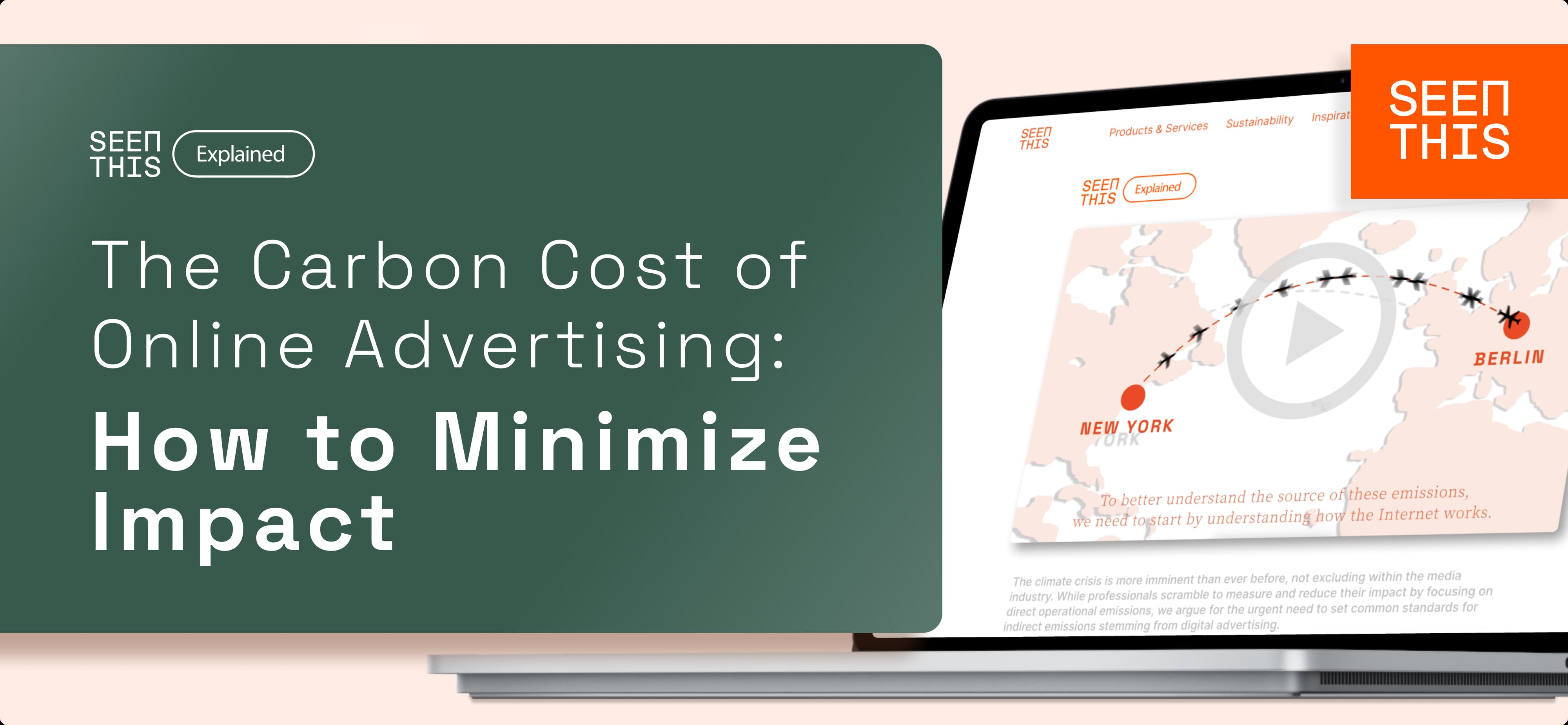Carbon cost of online advertising: maximizing performance while minimizing emissions

In the fast-paced digital world we live in, online advertising has become an integral part of every company's marketing strategy. It offers precise targeting, unprecedented reach and measurable results. However, amidst this digital revolution lies a pressing concern that demands our attention: the carbon cost of online advertising.
The truth is, the digital advertising industry accounts for a significant portion of global carbon emissions, contributing to the climate crisis we face today.
So as an industry, how can we minimize its environmental footprint?
Understanding the carbon cost
Online advertising alone contributes approximately 60 million tons of carbon emissions annually. To put this into perspective, that's equivalent to the carbon footprint generated by 33 million flights from New York to London.
Data transfer lies at the heart of this issue, with every step in the internet supply chain adding to the carbon footprint. And with more connected users consuming more rich media, particularly video, global data transfer is projected to grow by 20% each year.
Mitigating the carbon footprint
Initiatives such as Ad Net Zero, which aims to achieve a net-zero carbon footprint by 2030, are highlighting the need to prioritize sustainable practices.
To mitigate the carbon footprint associated with digital marketing, there are various technologies emerging that can help marketers start to take those all-important steps. For example, only streaming content when in view, only sending creatives that user conditions allow, and optimizing creative segment by segment - to attain the highest quality that can be perceived by the human eye - can all help maximize performance and minimize emissions. What’s more, better-performing ads means the need for fewer impressions to meet campaign targets.
In addition, SeenThis’ brand-new Emissions Dashboard revolutionizes the way marketers can address their carbon output. It allows clients to track, measure and analyze their carbon footprint of content delivery in real time. First, we measure data transfer, which enables us to calculate CO2e footprint. This, in turn, allows us to estimate data reduction and associated avoided emissions.
With this new tool, marketers are armed with the insights needed to understand their footprint and carbon cost of outcomes and take the necessary steps to reduce campaign emissions. What’s more, the dashboard automatically tracks all campaigns, eliminating the need for manual setup.
Minimizing data waste
To help minimize data transfer, innovative technologies like segment-by-segment optimization are leading the charge today. Unlike conventional approaches that download entire content regardless of user engagement, SeenThis uses adaptive streaming technology that breaks data down into smaller packages and transfers only what is necessary at that precise moment. So ads are streamed only when they are in view, reducing unnecessary data transfer and thus carbon emissions. This technology not only adapts to user conditions such as connection speed, available bandwidth, device and browser, but also optimizes based on the video content itself.
For example, LATAM Airlines, South America's largest airline group, partnered with SeenThis to address the impact of digital advertising on the environment while achieving significant cost savings. By leveraging SeenThis' adaptive streaming technology, LATAM reduced their cost per user across the US by up to 83%, resulting in reduced data usage, energy consumption, and CO2 emissions compared to sending the same quality creatives using conventional download technology.
Enhancing user experience and accountability
SeenThis's technology takes optimization a step further by delivering lightning-fast ad-loading and higher attention from users. This translates into fewer wasted impressions and more efficient use of resources.
With live-edit functionality, real-time reporting, and no coding required, the creative platform empowers marketers to optimize and simplify their workflow, supporting both efficiency and sustainability objectives.
The carbon cost of online advertising cannot be ignored, and as an industry, it’s time to start prioritizing the strategies that will make a tangible difference. By leveraging core features like the Emissions Dashboard, segment-by-segment optimization, and creative platform, businesses can strike a balance between maximizing performance and minimizing emissions.
Check out our latest video to find out more. Together, we can make a difference.
Jun 14, 2023





